NANYUKI AND ITS SURROUNDINGS
- chuckmeltzer
- Jun 29
- 11 min read
Updated: Jun 30
The next destination is Nanyuki, where my friend Lauren has her home in Africa. Lauren and her husband David have been traveling to Africa for over 15 years, having experienced numerous safaris across the continent. They chose Kenya due to its relative political stability, abundant wildlife, and pleasant weather. Being situated on the equator offers the advantage of consistent 12-hour days and nights. In Nanyuki, the weather is a dependable 52-75 degrees F, with two distinct seasons: wet and dry.

Traveling across the African continent is quite different from a cross-country trip in the US. When we flew from Istanbul to Nairobi, we quickly passed over the Mediterranean, but it took 7 hours to reach Kenya. Africa is the second-largest continent after Asia and is vast enough to accommodate the United States, China, India, Japan, Mexico, and most of Europe within its borders. However, contemporary world maps distort the size of countries, making regions far from the equator seem larger than they truly are. As a result, Europe and North America appear significantly larger, while Africa's size remains nearly unchanged.
Nanyuki is a market town in central Kenya, located about a 3 to 4-hour drive from Nairobi. It features a small airstrip, making access to the bush more convenient. In a few days, we will fly from Nanyuki to Nairobi as we begin our return journey, with a stop in Istanbul. We used Lauren’s home as our base for various adventures and spent time on everyday activities, such as running errands, visiting the hardware and plant stores, getting a haircut, and other usual tasks. Lauren’s place is about a 20-minute drive from town, situated in a private conservancy called Balungi. This conservancy spans 218 acres, divided into 21 parcels of 10 acres each, where people can build on 2.5 acres while leaving the rest open for wildlife passage. The property reminds me of California, with familiar plantings like succulents, fountain grasses, abutilon, lavender, and other Mediterranean plants that thrive in a dry environment. There are numerous bird baths and birds to watch throughout the day.
On our first evening, there was a zebra on the other side of her electric fence and at night we could hear hyenaes. It was running the “roads” of Balungi that I took my spill and scraped up my face. Of course, being the fragile person that I am, my shoulder and neck are still tweaked from it, but my face is back to its baseline beauty. The guide I was jogging with was very impressed that I actually did a roll first as I saw myself going down in slow motion and took the brunt of the fall on to my right shoulder before slamming my face down.
Driving into Nanyuki is mostly on dirt roads with lots of rocks and huge craters which are too big to be called potholes and speed bumps; the “Masai massage” is alive and well here with all the bouncing around in the Land Cruiser. I have gotten the knack of seeing the next bump coming up and outstretched arms to the dashboard help to reduce the jolt which comes with each one. Then there is the dust storm which happens with every passing vehicle; the conchal bowls of my ears seem to be great collectors of this dust as evidenced by my washcloth when showering or bathing in the evening. I am not usually a tub guy, but I have decided that soaking is the best way to rid one of a day in the bush. The challenge of driving on these roads are their fearless scooters known as Boda-bodas, piled with 3+ people, or full-sized couches, or beds, or building material, or bundles of bundles with who knows what in them; it is truly a marvel of how well they balance and still manage to stay upright. The roads are only one lane in each direction and there is a lot of passing going on and playing chicken seems to be a national pastime.
We pass by British and Kenyan military bases on our way in. We get to see a lot of the British soldiers in town at the supermarket. Of course, through the eyes of this old guy, they are all super fit, young healthy-looking dudes who look like they should be on a rugby or soccer team. Much to my delight, we hit the supermarket almost every day with this special eye candy lined up at the checkout counters. Anyway, I digress, so back to what the town of Nanyuki offers; there are some strip malls occupied by quite a few small medical clinics (which do alternative health care and some western), chemists (pharmacies), medical laboratories, cell phone stores, hardware stores, supermarkets, auto repair shops, car washes (which crack me up because of the endless source of dust from the roads), salons, churches and schools. Lots of churches and schools.
Clearly the evangelicals and missionaries have had a major hold on the population here. It is encouraging to see so many private schools and to know it is an important part of their culture to see that their kids get a proper education. Seeing all these schools does not diminish that we also saw many young school-age boys along the roadsides and in the fields tending sheep, goats, cattle, donkeys and camels. Aside from the brick-and-mortar stores there were the many tin roofed shacks lining the roads selling everything from fruits and vegetables to coffins. Yes…there is a strip of coffin makers strategically located across the street from the larger teaching hospital which makes one wonder as to the overall quality of healthcare.
As I was curious about the state of healthcare here in Kenya, Lauren was able to facilitate a visit to a small 40 bed hospital in town. The clinic/hospital reminded me of my residency at Kings County Hospital in Brooklyn, which was in contrast, a 2000 bed city hospital, but lacked much of technology we have today in hospitals. The patient rooms in this Nanyuki hospital were spotless, the 3 bed ICU did appear to have some monitors and pumps; they had a patient that day scheduled for a trach (I offered to assist) who had been intubated for almost a month following pneumonia and sepsis. The person giving us the tour was an Indian woman who was born in Kenya, but when she was born, this hospital was “whites only” and now she is the board of directors’ chairperson. She was clearly proud as to how the times have changed and about their little hospital; she boasted that they had ultrasound and a CT scanner, which we take for granted in our hospitals. She introduced us to a couple of the docs working in the clinic; one was a Cuban ophthalmologist who is working as part of a program in which Cuba loans out docs for seven-year stints. In addition, we met a Kenyan born Indian gynecologist who trained in Moscow and had to learn Russian to be able to study medicine.
I watched a patient being brought into the ER on a gurney with their own oversized mattress folded up on the sides turning him into a human taco. Although there has been progress, infant mortality rates remain high in Kenya and HIV/AIDS is the most common cause of death, followed by cardiovascular, respiratory (including TB) and cancers.
On a side note, we watched The Constant Gardener with Ralph Fiennes and Rachel Weisz, and it is a fictional expose’ about drug clinical trials done here in Africa as big pharma saw the people here as expendable guinea pigs. The photography in the movie is beautiful and the story poignant. We have been watching movies filmed in Africa while hanging at the house, and it is fun to truly appreciate them having been here; Out of Africa is stunningly beautiful, and Meryl Streep had me a bit choked up at the end; I am becoming a Hallmark sap!!
The red earth of Africa is a powerful symbol, often associated with themes of heritage, struggle, and the land's deep connection to its people. One quote, from the film "Blood Diamond," states, "This red earth, it's in our skin. The Shona say the color comes from all the blood that's been spilled fighting over the land,"
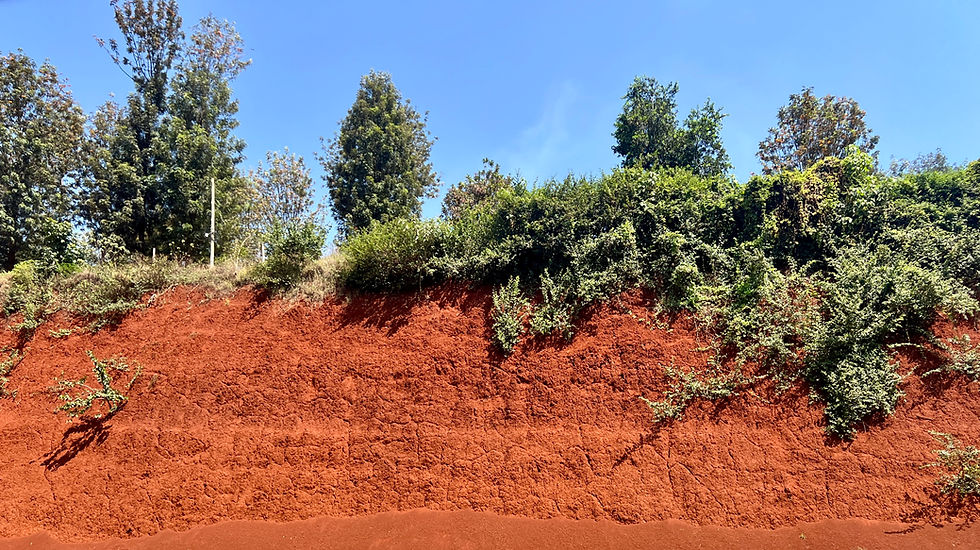
Food in Kenya has been fine. This is not the world of Michelin star restaurants. In Nanyuki, we went out for lunch but ate dinner in because the roads at night are very dark and with the many pedestrians, a bit precarious, as we would not want to hit them or one of their goats. My favorite place for lunch was a quaint café called Antonia’s; it is as close to a perfect SoCal breakfast/lunch place as I could imagine to find here in central Kenya. Lots of creative salads and bowls. Other places we ate, such as Cape Chestnut and The Nook had more traditional British colonial fare such as pork pies, which were fine, but Antonia’s was the place we returned to a few times.
I do not pick up other languages well and only mastered my rudimentary Spanish after studying it for years in high school and then listening to our medical interpreters at Kaiser. One word in Swahili that I have learned is: Mzungu (mu-ZUN-gu), typically used to describe a white person and the literal translation means “someone who wanders around aimlessly.” It is so interesting to be a white minority person where the Black Kenyans seem to be excited to see us Mzungu drive by and will give us a wave and shout out “Mzungu”; at first it was a bit disconcerting, but the reality is that it is a friendly shout out. Also, everybody waves to passing vehicles as a nice acknowledgment.
There is not much traffic going into town, but then it does get congested once there. Lauren will take a circuitous route just to make a right-hand turn and to avoid being hit by the boda-bodas or matatus (buses). She is convinced the matatus do not have brakes! On the drive in, we see many people walking as that seems to be the primary method of getting from point A to B. The outfits are often bright colors and can be traditional garb or Western attire.
Kids with backpacks going to school, women with bundles on their backs that range from babies to large water bottles, and the ubiquitous herders with their livestock. In town, chickens wonder the streets as well as random dogs; I did not see any feral cats which are probably too delicious for the other wildlife to survive. We heard a story about a ginger housecat that would often sit in a window on a property out in the bush and it met its demise when a leopard decided to jump through the window to snag dinner. At Lauren’s house, the windows are mullioned with roughly 5x10 inch panes, but instead of wood holding the glass, it is very thick steel, to prevent any leaping leopard from entering uninvited. Her bedroom door is also a steel door with a heavy bolt that makes it into a safe room.
As I commented earlier, Kenya is a relatively stable and safe place to live, but there have been times in which some unrest has caused turmoil that resulted in mzungu (whites) being attacked, but overall, it is probably still safer than the violence we have in the states on a daily basis.
As I sat writing this blog in a home office at Lauren’s, with its beautiful, mullioned windows on two sides looking out to the garden and mountains in the distance and letting in lots of natural lights, I was lulled by the ongoing cacophony of the bird and insects who chirp, sing, buzz and make a variety of crackling sounds that fill the silence which otherwise abounds. The birds are the major distraction watching them pick nectar out of flowers, gather building material for their nests or just sitting on a branch singing an aria.
No sirens, horns, garbage trucks backing up, or screaming homeless people, just nature. The only annoyance is the occasional scout ant crawling up a leg, arm or that has found its way to the back of my neck. There are lots of ants!!! My workouts have been limited to a TRX located on the back porch and rather than listening to some Spotify playlist, I just listen to this soundtrack curated by nature and it is hypnotic and calming.
I have asked some of Lauren’s friends and neighbors here what either brought them to Kenya or why those born here stay here. The responses are consistent as to their love of nature, the wildlife, climate and the pretty pockets of paradise. A couple who live in Balungi enjoy having their evening cocktail from a second floor balcony where they have a small platform set up for them to socialize with these cute bush babies, small nocturnal primates with big eyes and remarkable jumping ability, who they will offer a nibble to by hand.
This couple noted that they enjoy the simpler quiet, the various safari opportunities to explore and the African people who are amiable. They appreciate that the cost of living affords them a quality of life which makes it easier. For example, my jogging guide, Johnnie, who is a neighbor of Lauren’s in Balungi, has five full time staff whom he provides housing and pays then total about a $1000/month. My spoiler was to get my t-shirts back pressed by Lauren's housekeeper; Scotty already warned me not to get used to it!!
Daytrips out of Nanyuki have included a visit to Ol Pojeta Conservancy and to Ol Jogi as well as our hikes in the national forest of Mt Kenya. Ol Pojeta is about 140 sq miles or 90,000 acres and has a long history going back to the colonial era when there was a lot of cattle ranching and passed through several owners until it was purchased in 2004 and secured as a wildlife conservancy. It boasts the “big five game”, lion, Cape buffalo, elephant, African leopard and rhinoceros. What makes Ol Pejeta special is that it has the few remaining Northern white rhinos who live in a protected sanctuary with 24-hour armed guards.
Poaching is a huge problem as the rhino horn is still a valued commodity in Asia, so any conservancy with rhinos has to have a security force to track and protect them. In addition to the rhinos of Ol Pojeta, there is a the Sweetwaters Chimpanzee Sanctuary. Chimpanzees are not typically found in Kenya; these chimps were brought here as refugees from war torn areas of west and central Africa and currently there are 43; we met a couple when we visited the sanctuary.
We were also very fortunate to get a VIP tour of Ol Jogi which is a privately held conservancy owned by the Wildenstein family. It has 58,000 acres and it offers exclusive use of its property to only one small group at a time for a very steep price. We were able to get a couple of hours glimpse of the property with Jaime, the property overseer of wildlife, who is creating a multi-conservancy effort to further promote rhino conservation. He is in the process or raising $90m, so if you know any well-heeled people into conservation, I can put you in touch. Meg Whitman is the current ambassador here in Kenya and she is a big supporter of his effort and had also put some of her own money into his project. He is the quintessential white man of the bush, studly, blue eyes, and totally charming who grew up in Kenya, but like all good Kenyans, did his secondary schooling and university in the UK, and then returned. Jamie managed wildlife at Ol Pojeta before coming to Ol Jogi.
What I have observed in talking to the various wildlife guides is their knowledge of not just the animal, but the land, the potential blights, and what it takes to conserve both the animals and land here for future generations. We got to see two of the rhinos roaming around, one white and one black. They are prehistoric in appearance and magnificent. We also encountered a large bull elephant whose tusks were at least 3 feet long. Then there the 3 male lion cubs taking a morning snooze under a bush.
Of course there were many zebras, both the plains and the Grevy, who are the rarer ones and have the cutest big ears.
There are also reticulated giraffes who have a different pattern than the spots we typically think of on giraffes. I think the giraffes are the most elegant, and can I say gay, of the animals with their beautiful long necks and the way they walk!!

We saw many oryx, Cape buffalo, Gerenuk antelope with their long Somali necks, tortoises, impala, ostrich, baboons, and a wide variety of birds…all in two hours!!!
We were very lucky to see all this in such a short period of time. The only animal of the big five game remaining elusive to me is a spotted leopard. I did get to see the rarer black (melanistic) leopard which I will tell you about Suyian Soul, another conservancy where we spent 3 days.
Suyian Soul is a special place and I am going to tell you more about it in my next blog, so that is all for now.
“Kwa herini” is Swahili for goodbye for now with more to come,
Chuck


















































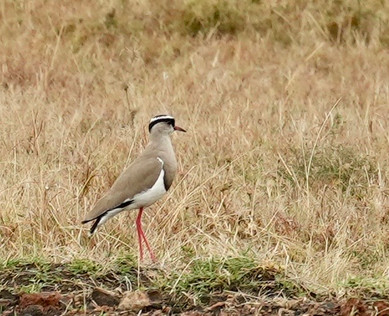








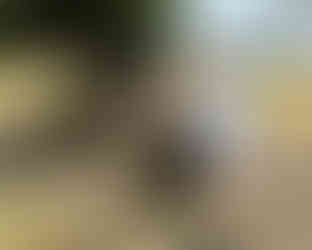







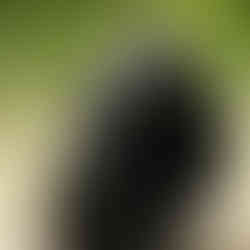

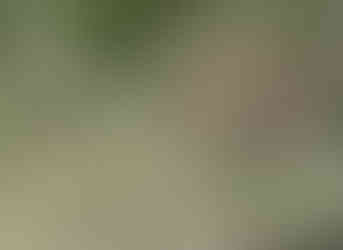



















Comments